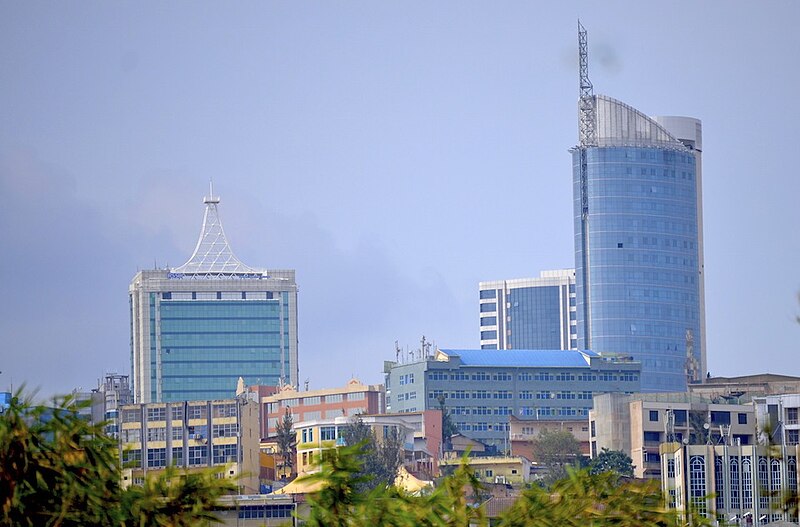Over the past 17 years, Rwanda has cleared informal settlements to make way for modern urban construction. Kigali’s ambitious city master plan is expected to be fully realised by 2050.
But what about the people who are pushed out in the process, and their memories? Shakirah E. Hudani presents some of their stories in her new book Master Plans and Minor Acts: Repairing the City in Post-Genocide Rwanda. She answers questions about Kigali’s emergence from conflict, and what could be.
What has emerged from the state’s vision for Kigali?
Kigali was established as a colonial outpost in 1907 by German administrator Richard Kandt.
The city became the capital of an independent Rwanda in 1962 but remained mostly an elite hub separated from rural areas of the country, where the majority of the population lived.
During the genocide against the Tutsi and soon thereafter, the city became a site of refuge for those fleeing the violence.
Ultimately it became a site of resettlement as many returned from around the region and further afield to rebuild the capital.
Approximately 60% of Kigali’s population lived in informal settlements in 2012. Conceptual master planning for the city began in 2007-2008 and was initially led by American firm Oz Architects.
This process was followed by a more extensive Singaporean designed master plan for the city in 2013.
Large areas of the existing city were marked for rezoning and rebuilding by 2040.
In readiness, the majority of the city’s informal settlements have been targeted for demolition.
Some residents in now demolished areas such as Kiyovu cy’Abakene and others areas like the Bannyahe settlement in Gasabo District have been offered unaffordable housing far from the city centre, their jobs and social networks.
The Kigali City master plan has been revised for 2050. Six secondary cities around the country have been replanned too.
They have been set up as gateways for Rwanda’s transformation into an urban-led, middle-income country.
Planners working on Kigali envisage a green city, connected to investment opportunities for a certain class of Rwandan and for drawing in foreign capital.
These aesthetically pleasing plans promise “Kigali Yacu!” (Our Kigali!). But my research shows that far from being inclusive, these plans do not redress the social and spatial inequalities in the country.
About 83% of Rwandans live in rural areas. Research further shows that Rwanda is “the most unequal country in east Africa”.
In the aftermath of conflict and genocide, my book argues, planners must pay attention to social equity.
Dispossession can undercut bonds of trust and processes of social repair, and create instability.
Repair has multiple meanings. Social repair relates to reciprocity between neighbours and social relations around the home and the neighbourhood.
It also relates to the repair of the built environment in Kigali and in smaller urban areas.
I suggest that more popular alternatives to master-planning must emerge. Citizens of all areas must be centrally involved, rather than just the state and top-down planning expertise.
“Minor acts” of repair centred on place are key to rebuilding an equitable city and restructuring social relations after genocide.
What is the cost of this bold authoritarian vision?
I started work in Rwanda in 2002, examining the community-based trials taking place after Rwanda’s 1994 genocide against the Tutsi.
These Inkiko-Gacaca trials sought to lay the foundation for both grassroots justice and reconciliation in Rwandan society.
Yet scholarship has shown that mistrust remains and that, under the surface, reconciliation is an ongoing process.
The city master plan erases social memory in urban spaces. It replaces the city’s existing built environment without considering its effects on ideas of healing and conciliation centred on place.
Many of my interviewees in older areas of Kigali like Muhima and Nyamirambo expressed a sense of loss and disorientation about the emerging new contours of the city.
They had developed social networks tied to older spaces in the city, to neighbourhoods and routines. For them, the city was not “born again”. Instead it was a site of memory maps.
What could Rwanda’s planners do better?
Many key planners working on Rwanda’s new cities are architectural and planning experts from overseas.
They have little personal experience with the country’s complex history and its contested politics of memory.
Rwanda’s cities are hence being designed largely for an elite class of Rwandans and for foreign technocrats and investors.
Such problems are common to other cities in the region. But they are more urgent in a post-conflict, post-genocide space where urban erasure fails to reckon with traumatic memory.
Rwandans I interviewed said planning needs to be smaller scale, more gradual, inclusive of all, and more “humane”, as one trader put it.
Many stated in different ways that the city is a historical milieu and can’t be remade on a large scale.
For instance, one person remarked that one cannot simply replace a whole city, without first reckoning with existing memory and the history that the new city supplants.
I met long-term residents of older parts of Kigali who helped each other through informal systems of mutual aid, operating in the private sphere through neighbourly initiatives to repair homes and exchange food.
They also shared stories of living in Kigali over time, and the meanings particular roads or places in the neighbourhood had for them.
Top-down planning at scale threatens to replace localised memory and place-based sociality.
What would a Kigali-for-all look like?
According to my study, many Rwandans of all walks of life dream of access to the city and would celebrate a more inclusive vision for urban space.
Yet many are unable to access housing and public spaces in Kigali due to lack of affordability and policing that is tough on informality of all kinds.
Others still cannot move to urban centres from rural grouped settlements (imidugudu), where most of Rwanda’s rural population live, in part because they can’t afford the associated costs.
Rather than prescribing particular policies or types of urban design, my book takes the position that these problems must also be viewed from the perspective of social memory and repair and how these coalesce and come to be represented in urban space.
Reparative planning approaches take into account incremental and smaller-scale practices of planning.
They must consider the history of rupture that has affected Rwanda over time, and address the types of unresolved memory that inhabit its old neighbourhoods and informal settlements.
Instead, Rwanda’s state vision presents a bold version of official history that explicitly prioritises unity and compliance, as well as a single narrative of the past.
The questions at stake are hence not just planning questions of how to design a better city.
My book shows us that we must broaden definitions of planning and repair to consider social repair in urban environments.



